
What is CloudOps?
CloudOps is a term used to describe the set of practices and processes that are used to manage and maintain cloud-based infrastructure and applications. It encompasses a wide range of activities, including provisioning, monitoring, scaling, and troubleshooting. CloudOps teams are responsible for ensuring that cloud-based systems are secure, available, and performant. The role of CloudOps is essential for organizations that rely on cloud computing to run their operations.
CloudOps, short for cloud operations, refers to the management and maintenance of cloud-based infrastructure and applications. This includes tasks such as provisioning, monitoring, scaling, and troubleshooting to ensure the security, availability, and performance of cloud-based systems. CloudOps teams are responsible for the day-to-day management of cloud environments, and play a critical role in enabling organizations to effectively leverage the advantages of cloud computing.
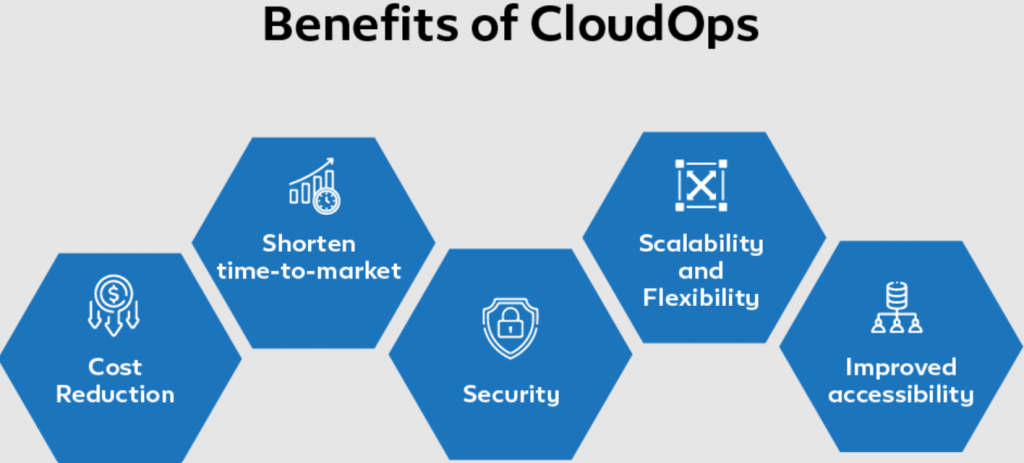
What is meant by CloudOps?
CloudOps, short for Cloud Operations, is the set of practices and processes used to manage and maintain cloud-based infrastructure and applications. It includes a wide range of activities such as provisioning, monitoring, scaling, and troubleshooting. The goal of CloudOps is to ensure that cloud-based systems are secure, available and performant. CloudOps teams are responsible for the day-to-day management of cloud environments, and play a critical role in enabling organizations to effectively leverage the advantages of cloud computing. The role of CloudOps is essential for organizations that rely on cloud-based systems to run their operations.
What are CloudOps Tools?
There are a variety of tools that are commonly used in CloudOps to manage and maintain cloud-based infrastructure and applications. Some examples include:
- Configuration management tools such as Ansible, Chef, and Puppet, which are used to automate the provisioning and configuration of cloud-based systems.
- Monitoring and logging tools such as Amazon CloudWatch, Elastic Stack, and Datadog, which are used to collect and analyze performance and operational data.
- Container orchestration tools such as Kubernetes, Docker Swarm, and Mesosphere, which are used to deploy, manage and scale containerized applications.
- Security tools such as AWS Identity and Access Management (IAM), Azure Active Directory, and Google Cloud Identity and Access Management (IAM), which are used to secure cloud-based systems.
- Automation and scripting tools such as Python, Ruby, and PowerShell, which are used to automate repetitive tasks and manage cloud-based environments.
- Cloud management platforms such as AWS Management Console, Azure Portal, and Google Cloud Console, which provide a central point of management for multiple cloud services.
These are just a few examples of the many different tools that are available to CloudOps teams. The specific tools that are used will depend on the organization’s needs and the specific cloud services that are being used.
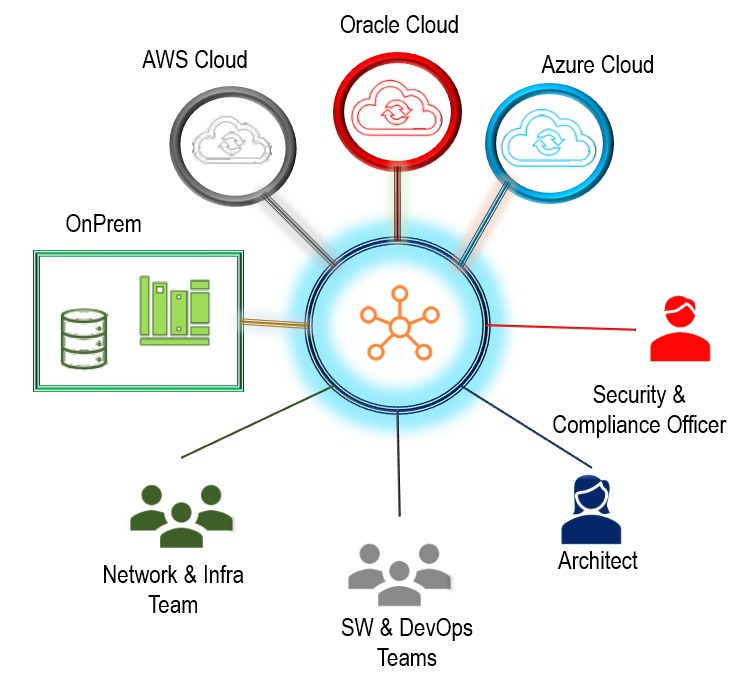
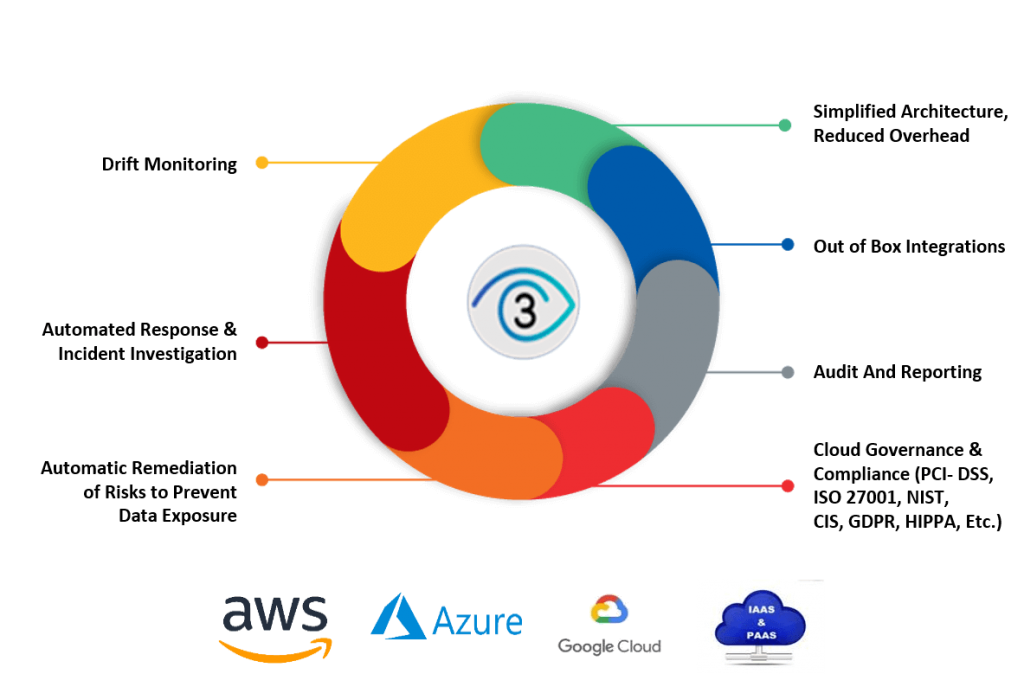
CloudOps Services
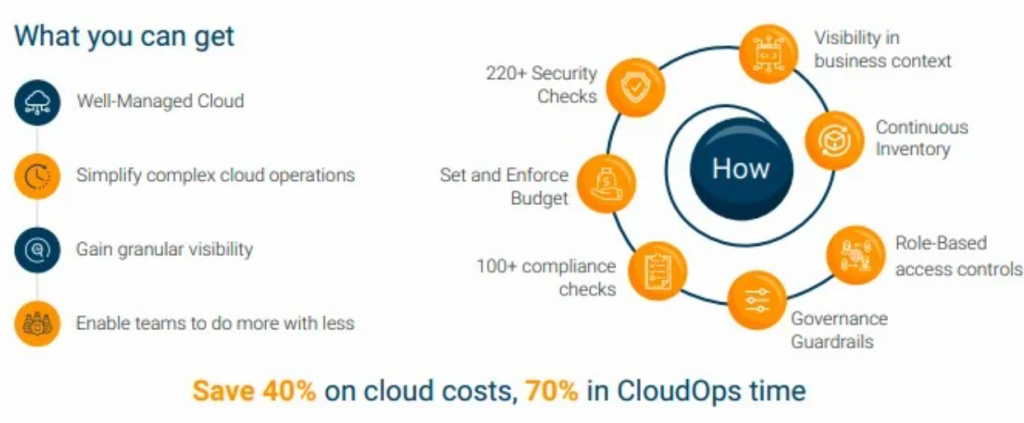
CloudOps services encompass a wide range of activities and responsibilities, including:
- Deployment and Provisioning: Setting up and configuring cloud resources, such as virtual machines, databases, storage, networking components, and more, according to the needs of the application.
- Monitoring and Alerting: Continuously monitoring the performance, availability, and health of cloud resources and applications. Alerts are triggered when predefined thresholds are breached.
- Scalability and Elasticity: Designing systems to automatically scale up or down based on demand. This helps maintain optimal performance during traffic spikes and cost savings during periods of lower demand.
- Performance Optimization: Identifying and addressing performance bottlenecks in the cloud environment, including optimizing database queries, network latency, and application code.
- Security and Compliance: Implementing security best practices, such as access controls, encryption, and intrusion detection, to safeguard data and applications. Ensuring compliance with industry standards and regulations is also a critical aspect.
- Backup and Disaster Recovery: Setting up reliable backup mechanisms and disaster recovery plans to ensure data integrity and availability in case of data loss or system failures.
- Cost Management: Monitoring and controlling cloud costs by optimizing resource allocation, using reserved instances, and implementing cost-saving measures.
- Automation: Leveraging infrastructure-as-code (IaC) tools to automate the provisioning, configuration, and management of cloud resources. This leads to consistency and reduces the risk of human errors.
- Containerization and Orchestration: Using containerization platforms like Docker and orchestration tools like Kubernetes to deploy and manage applications in a consistent and portable manner.
- DevOps Integration: Integrating CloudOps practices with DevOps methodologies to streamline the development and deployment of applications, fostering collaboration between development and operations teams.
- Service Level Agreements (SLAs): Defining and meeting SLAs for uptime, performance, and availability of cloud services to ensure a consistent user experience.
What is difference between CloudOps and DevOps?
CloudOps and DevOps are both approaches to managing and maintaining software systems, but they have some key differences:
Scope: CloudOps is focused on the management and maintenance of cloud-based infrastructure and applications, while DevOps is a broader approach that encompasses the entire software development life cycle, from development to deployment.
Goals: CloudOps aims to ensure the security, availability, and performance of cloud-based systems, while DevOps aims to improve collaboration and communication between development and operations teams, and to increase the speed and quality of software delivery.
Tools: Different tools are used in CloudOps and DevOps. CloudOps tools are focused on provisioning, monitoring, scaling, and troubleshooting cloud-based systems, while DevOps tools are focused on automation, testing, and continuous integration and delivery.
Responsibilities: CloudOps teams are responsible for the day-to-day management of cloud environments, while DevOps teams are responsible for the entire software development life cycle, including development, testing, and deployment.
While CloudOps and DevOps are different, they are closely related and often overlap. Many organizations adopt both approaches to manage and maintain their software systems.
In summary, CloudOps is a subset of DevOps that focuses on cloud-based systems, while DevOps focuses on the entire software development lifecycle.
ITOps Vs CloudOps
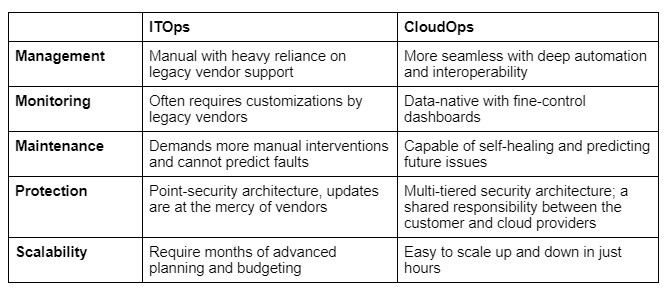
What does a CloudOps engineer do?
A CloudOps engineer is responsible for managing and maintaining cloud-based infrastructure and applications. Their main focus is to ensure that cloud-based systems are secure, available and performant. Some specific responsibilities of a CloudOps engineer may include:
- Provisioning and configuring cloud-based systems and services, such as virtual machines, storage, and networking.
- Monitoring and troubleshooting cloud-based systems to ensure they are running smoothly and identifying and resolving any issues that arise.
- Scaling cloud-based systems to meet changing demands, such as during periods of high traffic.
- Managing and maintaining cloud-based security, including configuring firewalls, setting up access controls, and monitoring for security threats.
- Automating the management and maintenance of cloud-based systems using tools such as Ansible, Chef, and Puppet.
- Collaborating with development teams to ensure that cloud-based systems meet the needs of the organization and are deployed in a timely and efficient manner.
- Keeping up to date with the latest cloud technologies and best practices, and continuously improving the organization’s cloud-based systems.
Overall, a CloudOps engineer plays a critical role in ensuring that cloud-based systems are reliable, secure and performant, and that the organization is able to fully leverage the advantages of cloud computing.
What is Azure CloudOps?
What is Azure CloudOps?
Azure CloudOps is a set of practices and processes used to manage and maintain cloud-based infrastructure and applications on the Microsoft Azure cloud platform. Azure CloudOps teams are responsible for ensuring that Azure-based systems are secure, available, and performant.
Azure CloudOps includes a variety of services and features that can be used to manage and maintain Azure-based systems, including:
- Azure Resource Manager (ARM) which allows provisioning, monitoring, and management of Azure resources using templates.
- Azure Monitor, a service that provides real-time data and analytics on Azure-based systems, including performance metrics, log data, and alerts.
- Azure Security Center, which provides security management for Azure-based systems, including vulnerability management, threat protection, and security recommendations.
- Azure Automation, which allows automation of repetitive tasks and management of Azure-based systems using scripts and runbooks.
- Azure DevOps, which provides a set of tools for software development and deployment, including continuous integration and delivery (CI/CD) and agile project management.
- Azure Backup, which provides a cloud-based data backup and recovery solution for Azure-based systems.
- Azure Site Recovery, which provides disaster recovery and business continuity for Azure-based systems.
These are just a few examples of the many different services and features available in Azure CloudOps. The specific services and features that are used will depend on the organization’s needs and the specific Azure services that are being used.
What is AWS CloudOps?
AWS CloudOps, short for Amazon Web Services Cloud Operations, is the set of practices and processes used to manage and maintain cloud-based infrastructure and applications on the Amazon Web Services (AWS) cloud platform. AWS CloudOps teams are responsible for ensuring that AWS-based systems are secure, available, and performant.
AWS CloudOps includes a variety of services and features that can be used to manage and maintain AWS-based systems, including:
- AWS Elastic Compute Cloud (EC2), which allows provisioning and management of virtual machines.
- AWS Elastic Block Store (EBS) and Simple Storage Service (S3), which provide storage options for AWS-based systems.
- AWS CloudFormation, which allows provisioning, monitoring, and management of AWS resources using templates.
- Amazon CloudWatch, a service that provides real-time data and analytics on AWS-based systems, including performance metrics, log data, and alerts.
- AWS Identity and Access Management (IAM), which provides security management for AWS-based systems, including user and role management and access controls.
- AWS Lambda, which allows automation of repetitive tasks and management of AWS-based systems using serverless functions.
- AWS Elastic Beanstalk, which provides a platform for deploying, running and scaling web applications and services.
- AWS CloudTrail, which provides a record of all AWS Management Console sign-in events and AWS API calls made in your AWS account.
These are just a few examples of the many different services and features available in AWS CloudOps. The specific services and features that are used will depend on the organization’s needs and the specific AWS services that are being used.
What is Google CloudOps?
Google CloudOps, short for Google Cloud Operations, is the set of practices and processes used to manage and maintain cloud-based infrastructure and applications on the Google Cloud Platform (GCP). Google CloudOps teams are responsible for ensuring that GCP-based systems are secure, available, and performant.
- Google CloudOps includes a variety of services and features that can be used to manage and maintain GCP-based systems, including:
- Google Compute Engine (GCE), which allows provisioning and management of virtual machines.
- Google Cloud Storage, which provides storage options for GCP-based systems.
- Google Cloud Deployment Manager, which allows provisioning, monitoring, and management of GCP resources using templates.
- Stackdriver, a service that provides real-time data and analytics on GCP-based systems, including performance metrics, log data, and alerts.
- Google Cloud Identity and Access Management (IAM), which provides security management for GCP-based systems, including user and role management and access controls.
- Google Cloud Functions, which allows automation of repetitive tasks and management of GCP-based systems using serverless functions.
- Kubernetes Engine, which provides a platform for deploying, scaling and managing containerized applications.
- Google Cloud Logging, which provides a centralized log management for GCP-based systems.
These are just a few examples of the many different services and features available in Google CloudOps. The specific services and features that are used will depend on the organization’s needs and the specific GCP services that are being used.
Summary
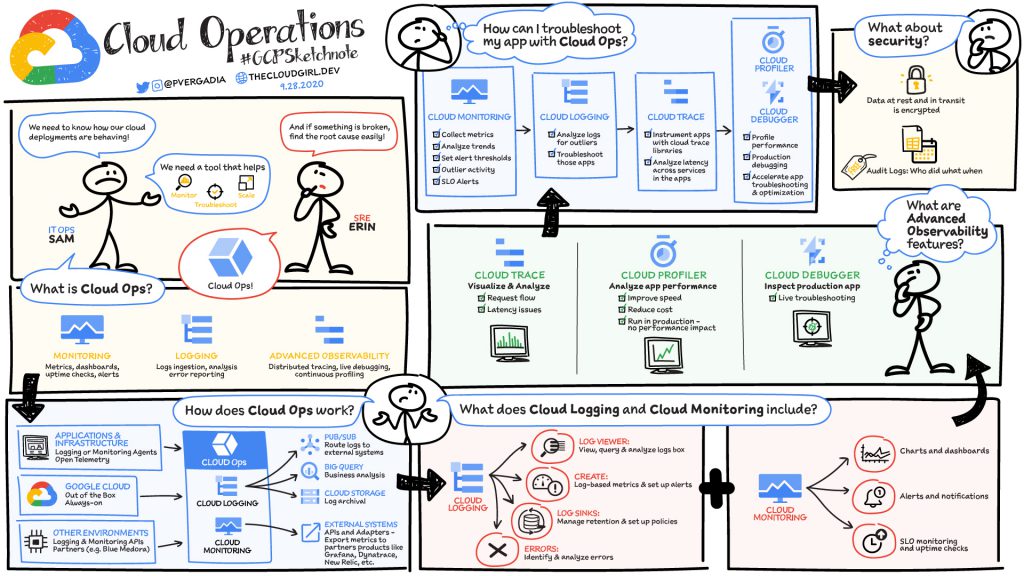
I’m a DevOps/SRE/DevSecOps/Cloud Expert passionate about sharing knowledge and experiences. I am working at Cotocus. I blog tech insights at DevOps School, travel stories at Holiday Landmark, stock market tips at Stocks Mantra, health and fitness guidance at My Medic Plus, product reviews at I reviewed , and SEO strategies at Wizbrand.
Please find my social handles as below;
Rajesh Kumar Personal Website
Rajesh Kumar at YOUTUBE
Rajesh Kumar at INSTAGRAM
Rajesh Kumar at X
Rajesh Kumar at FACEBOOK
Rajesh Kumar at LINKEDIN
Rajesh Kumar at PINTEREST
Rajesh Kumar at QUORA
Rajesh Kumar at WIZBRAND

 Starting: 1st of Every Month
Starting: 1st of Every Month  +91 8409492687
+91 8409492687  Contact@DevOpsSchool.com
Contact@DevOpsSchool.com
